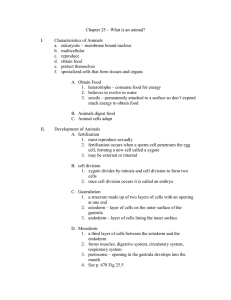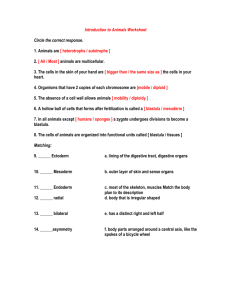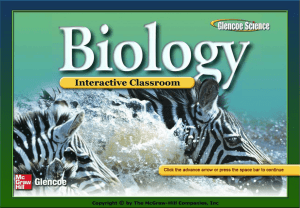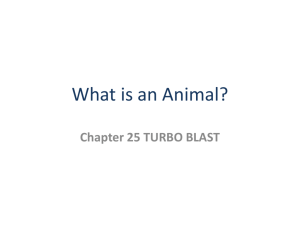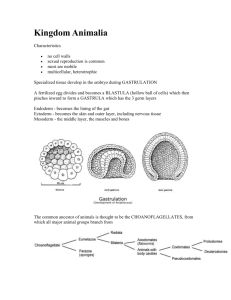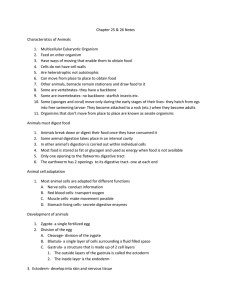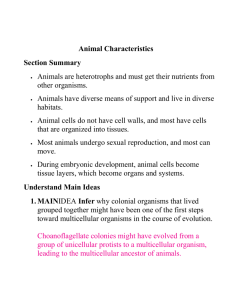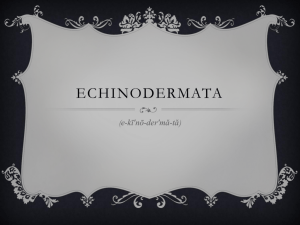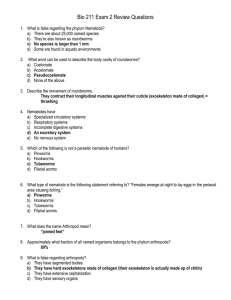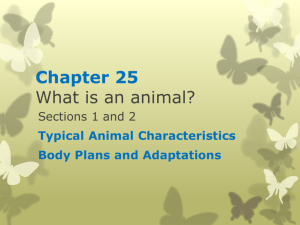Notes from Ch. 24
advertisement
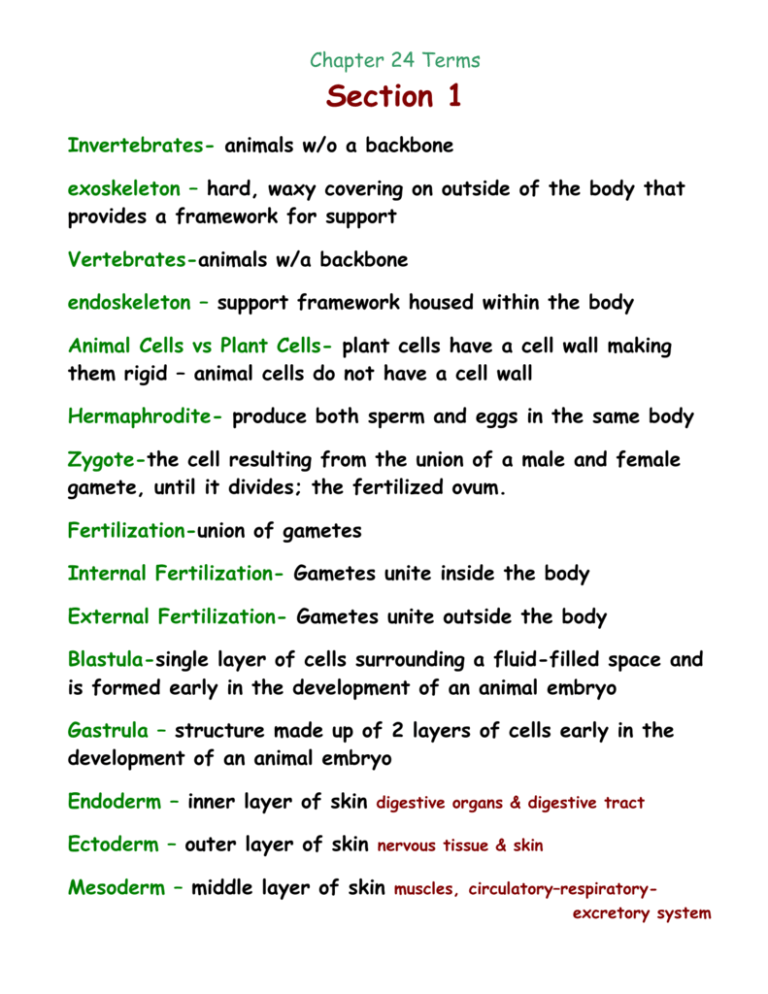
Chapter 24 Terms Section 1 Invertebrates- animals w/o a backbone exoskeleton – hard, waxy covering on outside of the body that provides a framework for support Vertebrates-animals w/a backbone endoskeleton – support framework housed within the body Animal Cells vs Plant Cells- plant cells have a cell wall making them rigid – animal cells do not have a cell wall Hermaphrodite- produce both sperm and eggs in the same body Zygote-the cell resulting from the union of a male and female gamete, until it divides; the fertilized ovum. Fertilization-union of gametes Internal Fertilization- Gametes unite inside the body External Fertilization- Gametes unite outside the body Blastula-single layer of cells surrounding a fluid-filled space and is formed early in the development of an animal embryo Gastrula – structure made up of 2 layers of cells early in the development of an animal embryo Endoderm – inner layer of skin digestive organs & digestive tract Ectoderm – outer layer of skin nervous tissue & skin Mesoderm – middle layer of skin muscles, circulatory–respiratoryexcretory system Section 2 Symmetry – refers to a balance in proportions of an object or organism Radial symmetry – adaptation that enables the animal to detect & capture prey coming toward it from any direction Bilateral symmetry – can be divided down it’s length into similar right and left halves that form mirror images of one another Asymmetry – animal that’s irregular in shape Cephal- combining form meaning head -itis - combining form inflammation Anterior – head end posterior – tail end Cephalization- tendency to concentrate nervous tissue and sensory organs at the anterior end dorsal – backbone side ventral – belly side coelom – body cavity completely surrounded by mesoderm pseudocoelom – fluid filled body cavity partly lined with mesoderm aceolomate – animals with three cell layers with a digestive tract but no body cavities Protostome- animal with a mouth that develops from the opening of the gastrula -simple animals, earthworms, insects Deuterostome – animal in which the anus develops from the opening in the gastrula -complex animals, fishes, birds, humans Segmentation- the division of bodies or body plans into a series of semi-repetitive segments Section 3 Sponges & Cnidarians Sponges OsculumCollar CellsSpiculesPoreArcheocyteLarva(e) Filter feederInternal FertilizationNo tissuesAsymmetricalCnidarians Have tissuesRadial SymmetryCnidocytes- cnidarian stinging cells Nematocyst- tube, poison, & barbs Gastrovascular cavityTentaclesMouth/anusNerve netPolypMedusa-
